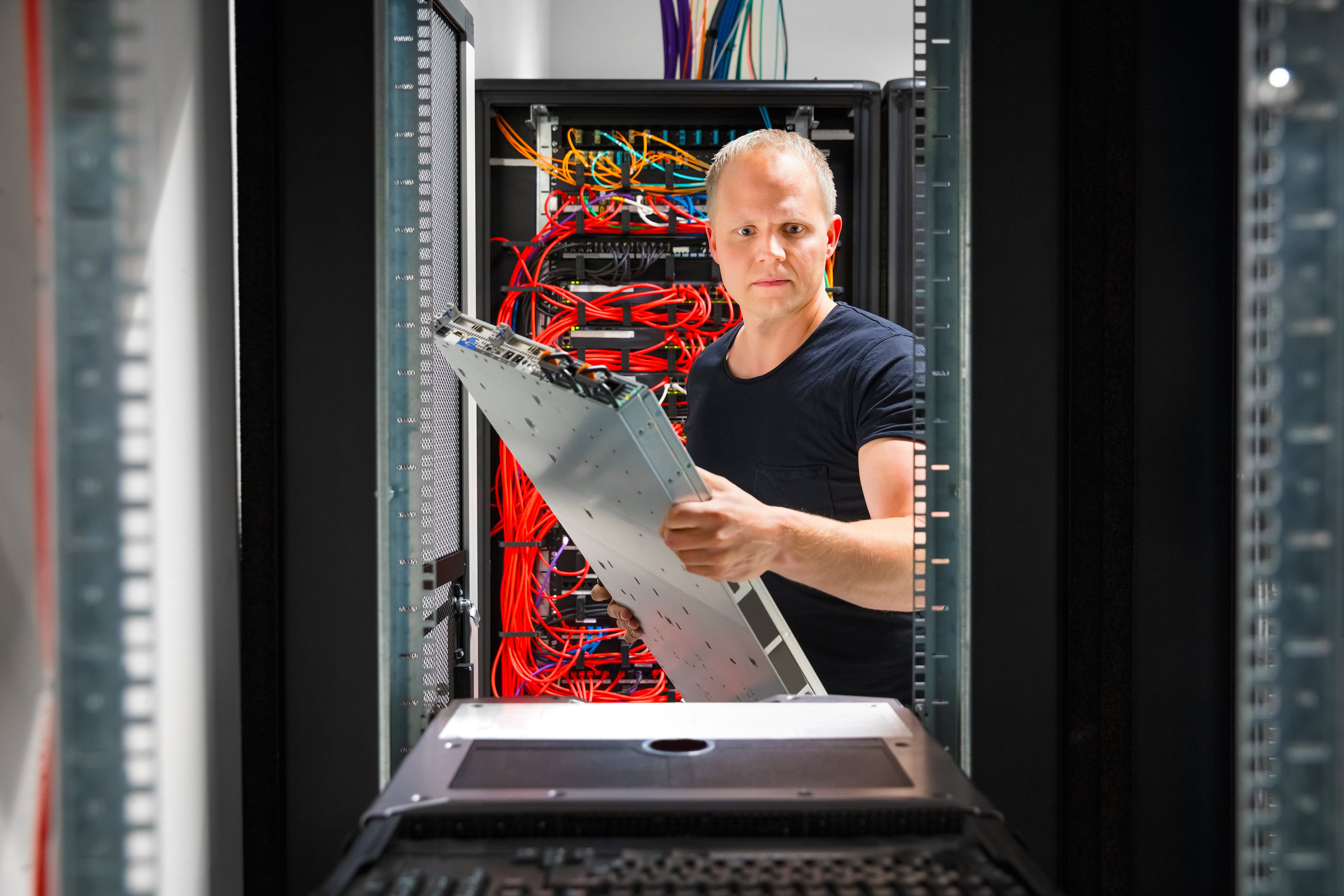Industry Insight: The digital economy is transforming organizations of nearly every size, and these businesses need to rethink how to evaluate their IT infrastructure. Having the right storage technology is still vital—but now, the way that technology interacts with its surrounding ecosystem is arguably more important than ever. Dell Technologies is a leader in the storage landscape, and its Dell EMC PowerStore is modern enterprise storage designed to address the needs of our new era. —ESG Showcase, Evaluating Modern Enterprise Storage, April 2021
A Resilient Business Needs a Robust IT Infrastructure
One that is reliable, flexible, and secure. While a small business' IT needs may be handled by a local ISP, whereas an enterprise likely requires a more complex solution comprised of multiple vendors. But for a mid-sized company whose IT needs can vary drastically depending on the nature of the business, building the right infrastructure that can flex and scale with ease has proven to be a challenge.
A well-designed IT infrastructure not only improves the overall efficiency of an organization; it can increase cost savings and data protection as well. Here are some things to keep in mind when it comes to designing yours.
The 3 Legs of Your IT Infrastructure
Think of your IT infrastructure like a three-legged stool comprised of hardware, software, and the network. Without sturdy legs on all three sides, the stool will collapse.
Hardware
One leg of the stool represents your hardware which can consist of servers, data centers, devices, switches, routers, and hubs. Many of these components can be virtualized for greater performance, providing a better balance of resources that can rapidly scale to accommodate growth.
Data storage can also be shifted off-premises, centralizing your IT infrastructure to maximize available physical space. Routers and switching can be managed remotely if needed, expanding access to your business communications. Data is protected and kept in compliance through secure encryption.
Software
The second leg of your stool represents software which consists of your operating system (OS), enterprise resource planning (ERP) system, customer relationship management (CRM) systems, and other business applications.
The software can also be outsourced for premium performance and more streamlined and manageable infrastructure. The result is a solution that integrates smoothly with various CRMs and allows your mid-sized business to provide world-class service both internally and externally.
Network
Your network really represents the base of your stool, controlling how you connect both inside and outside the organization. Its made up by internet connectivity, access, firewall, and security. Networking must extend throughout all of your physical locations, the cloud, and mobile, allowing staff to connect anywhere, anytime, across any device.
A business network requires end-to-end security, from firewalls to data encryption. Investments in the cloud can also streamline network management, allowing for greater connectivity and an “always-on” IT experience.
Must-Have Features of a Modern IT Infrastructure
When all three of the stool's legs are in place, you can begin building on extra features. A complete IT infrastructure must meet the service level expectations of the organization and be easy to navigate for both administrators and users. Here are some key features we recommend to further strengthen your framework and deliver the kind of results required to stay competitive.
1. Virtualized servers
Server virtualization can streamline your IT infrastructure by saving energy and reducing the amount of physical hardware in your data center. Virtual servers can be provisioned and deployed remotely which significantly lowers server management costs and frees up the budget for other IT initiatives.
2. Enhanced storage
A flexible and robust storage solution must be in place to manage disk storage, backups, archives, and retrieval. Virtualized storage environments provide a high level of security and data security, and duplicating data in the cloud will reduce the risk of loss if a physical location becomes compromised.
3. Heightened security
Enhanced security protocols move your mid-sized business’ IT infrastructure from a vulnerable state to an optimized state, helping control information and network access with strict identity management and authentication. An audit can reveal vulnerabilities in your security posture while employee awareness training can go a long way toward breach prevention.
4. Proof against network latency
Latency is the delay in the transfer of data across your company’s communications network. Low latency involves network connections in which small delays occur. These may not seem harmful, but when networks are strained to the limit with high data transfer volume, these low latency issues can become bigger problems.
High latency involves networks with long delays, which can cause severe bottlenecks and significantly decrease communications bandwidth. Updating software, provisioning servers with high capacity ports, or upgrading a network router or switch can often resolve latency issues.
5. Bandwidth optimization
Bandwidth optimization allows you to prioritize traffic and improve network management by ensuring critical transmissions get moved to the front of the communications line. This lowers costs and increases productivity by ensuring that vital data transfers don’t get bogged down during high traffic periods. Data can be compressed, cached, and summarized for optimal bandwidth allocation.
6. Zero downtime
We all know that downtime can be detrimental. A modern IT infrastructure will better ensure that all mission-critical applications remain up and running at all times. Achieving this level of continuity may require outsourcing critical data handling to a trusted cloud provider with built-in redundancies and security and compliance guarantees.
Start with an Assessment
Your company requires a strong, stable IT Infrastructure that will stand up to rapid scaling and consistently support business goals. Choosing the right solution, and the right partner is key to this endeavor. A data center assessment is a great first step. Prepare for yours by downloading our Audit Checklist.
ComSource is a proud partner of Dell Technologies, a leader in the storage landscape.




